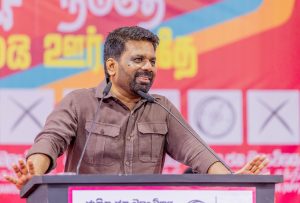Two weeks after the International Monetary Fund (IMF) completed its third review of Sri Lanka’s Extended Fund Facility, unlocking millions in critical funding, President Anura Kumara Dissanayake’s cabinet approved the National Anti-Corruption Action Plan (NACAP) 2025-2029. This move, coupled with a series of bold governance reforms, signals a paradigm shift in Sri Lanka’s approach to international market engagement and perception — one that roots the nation’s economic recovery in sweeping transparency and accountability reforms.
Since assuming office in September 2024, Dissanayake’s administration has prioritized systemic reforms over piecemeal measures, aiming to address the structural weaknesses that precipitated the country’s 2022 economic collapse. This crisis, marked by severe fuel shortages, inflation, and a foreign exchange crisis, led to a default on international debt. The current efforts, ranging from public sector restructuring to digital transformation, are not merely about meeting IMF conditions; they are about positioning Sri Lanka as a credible and attractive destination for foreign investment.
The NACAP, unveiled last week, is the cornerstone of this strategy. Unlike earlier fragmented anti-corruption efforts, this comprehensive five-year plan integrates institutional reforms, such as the establishment of an Asset Disclosure Directorate, with stringent enforcement mechanisms. By prioritizing transparency, the government aims to rebuild trust with international lenders and investors, a critical step in stabilizing the economy.
At the same time, renewed focus on the Commission to Investigate Allegations of Bribery or Corruption (CIABOC) to investigate offences further underscores long-scarce political will to combat endemic corruption. The commission’s failure to secure convictions and perceptions of selective enforcement led to widespread public skepticism in previous years. The new NACAP provides a roadmap of activities for CIABOC over the next five years. This new, proactive approach better aligns with global governance standards, enhancing Sri Lanka’s credibility and building investor confidence.
Building on this foundation, Dissanayake’s administration is also overhauling the public sector, focusing on restructuring state-owned enterprises (SOEs) through a proposed state holding company. The proposed listing of the holding company on the Colombo Stock Exchange is a bold move to attract private investment, improve SOE performance, and reduce fiscal burdens. This marks a departure from past reliance on ad hoc cost-cutting measures, which failed to address systemic inefficiencies.
At the same time, the government is accelerating digital transformation initiatives, including the Digital Identity Card project and the E-Asset Declaration System. These measures will streamline bureaucratic processes, reduce corruption, and improve public service delivery. This cohesive strategy contrasts with the previous administration’s scattered approach to digital governance, offering a more integrated and transparent framework for public administration and public sector transparency.
Complementing these efforts, the 2025 budget, adopted in March, introduced progressive tax reforms, raising corporate income tax rates for specific industries and removing export service exemptions. This shift from indirect taxes and ad hoc exemptions aims to broaden the tax base and improve compliance, essential for meeting IMF fiscal targets and stabilizing public finances.
Parallel to those efforts, the repeal of the colonial-era Foreign Debt Act in December 2024 and its integration with the Public Debt Management Act (2024) create a much-needed unified framework for debt management by centralizing the management of government borrowing. This reform contrasts with the previous administration’s reactive approach, which exacerbated the country’s debt crisis, and positions Sri Lanka for improved fiscal oversight, debt sustainability, and macroeconomic stability.
Finally, the “Clean Sri Lanka” project launched in January ties Dissanayake’s economic development agenda to a nationwide environmental and social sustainability initiative. Despite legitimate criticism about the initiative’s imprecision, it establishes a foundation upon which to promote ethical governance, attract ESG-conscious investors, and foster greater societal buy-in to the administration’s transparency and accountability measures.
Collectively, these reforms represent a transformation in how Sri Lanka intends to engage global markets. By rooting its foreign economic strategy in domestic governance improvements, the administration is addressing the structural weaknesses that have long hindered the country’s growth and ballooned its foreign debt. These measures not only fulfill IMF conditions but also enhance Sri Lanka’s appeal to foreign investors and multilateral lenders.
Challenges remain, however. The long-term success of these initiatives will require sustained policy momentum amidst public and political backlash against painful tax increases and subsidy removals. As Sri Lanka navigates this complex terrain, its progress will be closely watched by international stakeholders, whose confidence in the country’s economic recovery hinges on tangible results like sustained growth and reduced borrowing costs.
For now, Dissanayake’s governance-driven economic strategy offers a compelling case study of how small states can leverage domestic reforms to enhance their global standing. By prioritizing transparency, accountability, and efficiency, Sri Lanka is rewriting its economic narrative—one reform at a time.

































